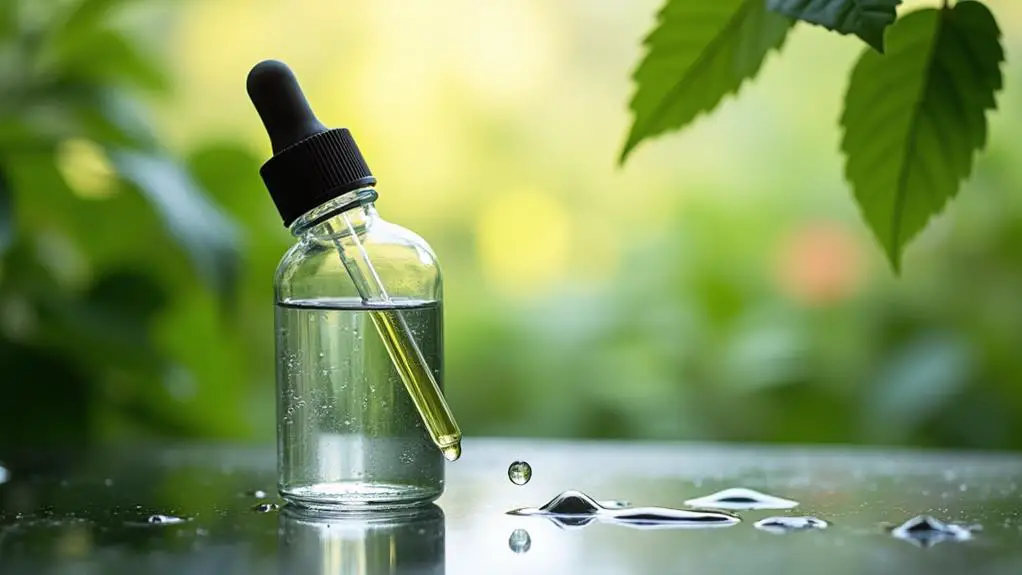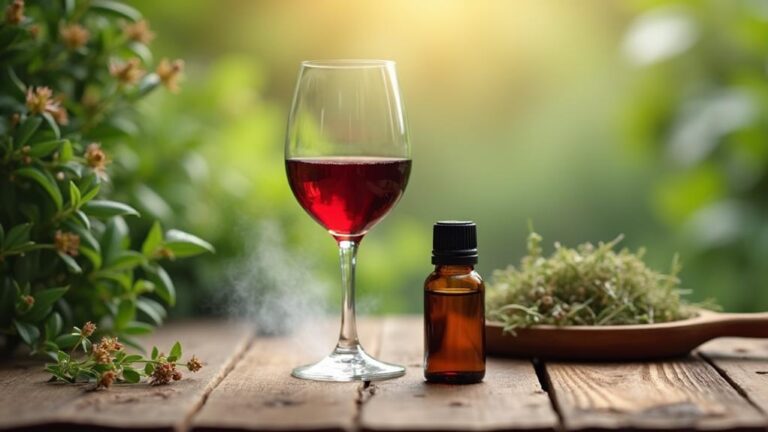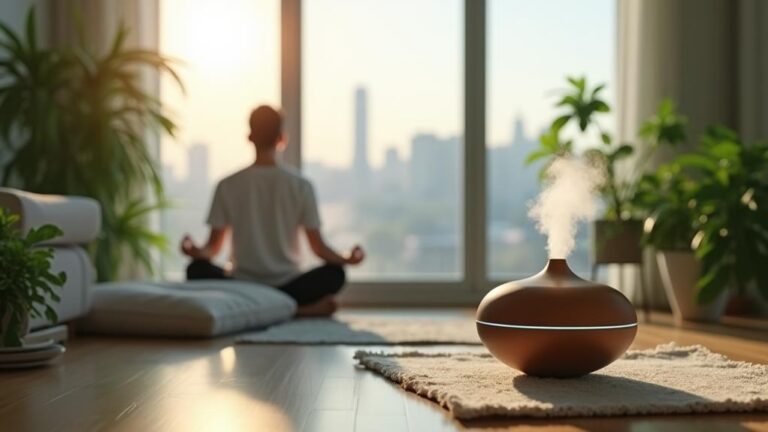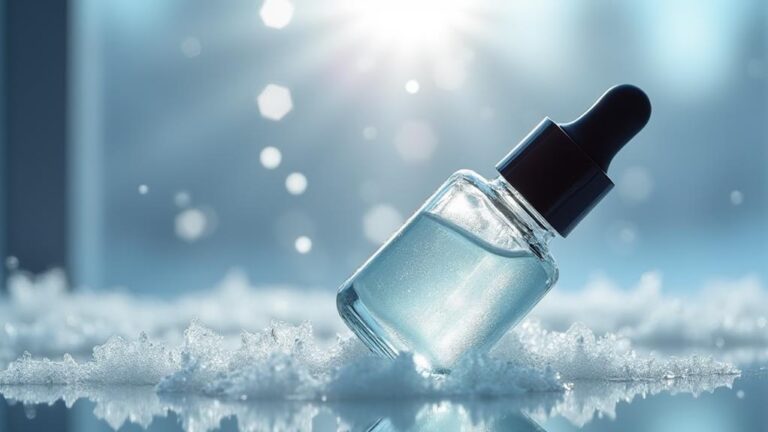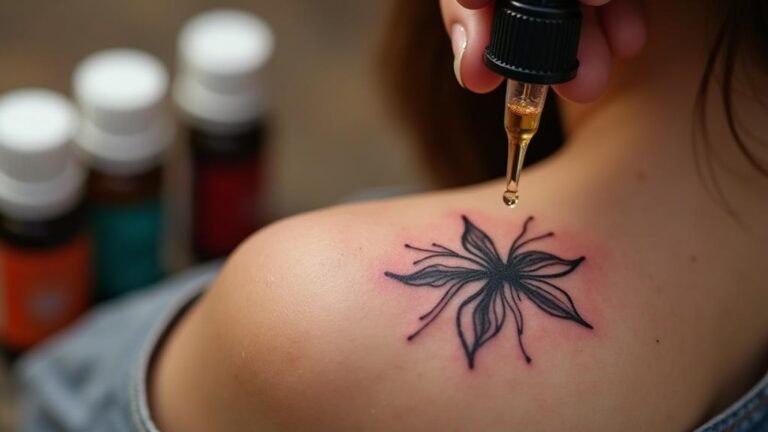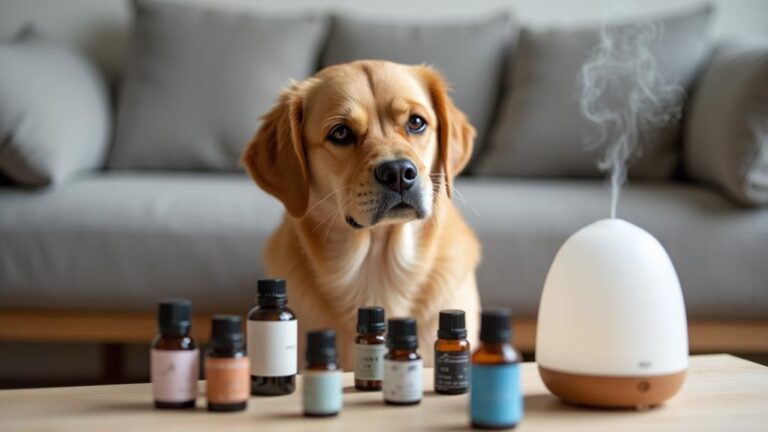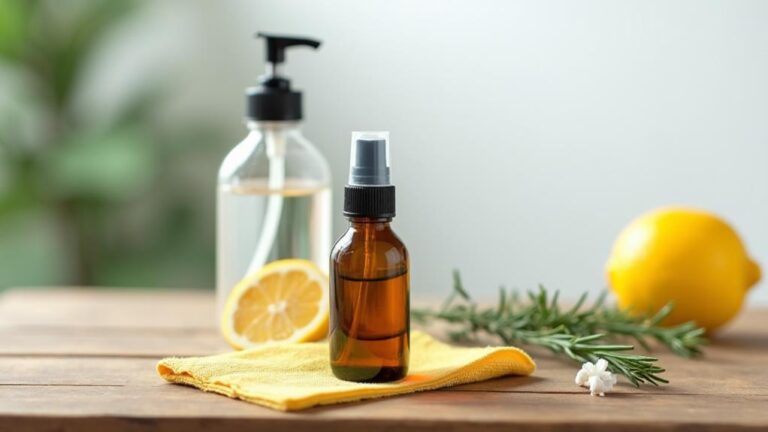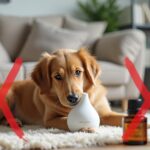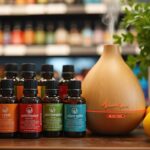You're likely aware that essential oils don't mix well with water, which is a problem when creating natural remedies or skincare products. Fortunately, dissolving essential oils in water is achievable with the right techniques. To get started, you'll need to select a suitable emulsifier – but with so many options available, it's vital to choose the one that's best for your needs. Let's take a closer look at the three simple steps involved in dissolving essential oils in water, beginning with the critical first step: choosing the right emulsifier.
Key Takeaways
- Choose a suitable emulsifier for the blend, considering the intended use, shelf life, and user's skin type.
- Combine the emulsifier and essential oil in a small glass container, starting with 1-2% oil concentration.
- Mix the emulsifier and oil thoroughly until the mixture is smooth and even, breaking down the oil's molecular structure.
- Gradually add water to the emulsifier-oil mixture, monitoring consistency and clarity, while maintaining 1-3% oil concentration.
- Adjust the pH level of the solution if necessary to optimize the emulsifier's performance and achieve a stable blend.
Choose the Right Emulsifier
When blending essential oils with water, an emulsifier is crucial to guarantee the oil droplets mix and stay suspended in the liquid. Without it, the oil will separate from the water, rendering the blend ineffective.
As you choose the right emulsifier, consider your options carefully. Natural emulsifiers alternatives are a popular choice among those who prefer a holistic approach. Some common natural emulsifiers include lecithin, derived from sunflower or soybeans, and gum arabic, a sap extracted from the acacia tree.
These emulsifiers work well in small amounts and can be easily incorporated into your blend.
On the other hand, synthetic emulsifier options like polysorbates and polyethoxylated castor oils offer greater stability and shelf life. These emulsifiers are commonly used in commercial products and are effective in large quantities. However, they can be harsh on the skin and may not be suitable for sensitive skin types.
When selecting an emulsifier, consider your blend's intended use, the desired shelf life, and the skin type of the intended user to make an informed decision.
Mix the Emulsifier and Oil
Combine your chosen emulsifier with the essential oil in a small, clean glass container. This step is vital in creating a stable mixture, as the emulsifier will help to break down the essential oil's molecular structure, allowing it to blend with water.
When mixing the emulsifier and oil, consider the oil's viscosity, as thicker oils may require more emulsifier to achieve the desired consistency.
To guarantee accurate measurement, use a pipette or a measuring spoon to add the essential oil to the emulsifier. Start with a small amount of oil, typically around 1-2% of the total mixture, and adjust as needed. For example, if you're using 10ml of emulsifier, add 0.1-0.2ml of essential oil.
When measuring the oil, take note of its viscosity, as this will affect the flow rate and accuracy of the measurement.
Mix the emulsifier and oil thoroughly, using a glass stirrer or a small spoon. Continue stirring until the mixture is smooth and even, with no visible oil droplets or separation. This uniform blend is essential for creating a stable emulsion that will dissolve effectively in water.
Blend With Water Solution
With your essential oil and emulsifier mixture prepared, it's time to blend it with a water solution. When combining the two, consider the water solubility of your emulsifier, as this will impact the overall stability of the blend. A general rule of thumb is to start with a small amount of water and gradually add more, monitoring the mixture's consistency and clarity.
When blending the emulsifier and oil mixture with water, it's crucial to maintain the correct oil ratios. Typically, a 1-3% essential oil concentration is recommended, with the emulsifier making up 10-20% of the total volume.
For example, if you're using 1 liter of water, you'd add 10-20 milliliters of the emulsifier and oil mixture. Stir the blend thoroughly, ensuring the emulsifier is fully dissolved and the essential oil is evenly distributed. If necessary, adjust the pH level of the solution to optimize the emulsifier's performance.
Frequently Asked Questions
Can I Use Essential Oils Undiluted on My Skin?
You shouldn't use essential oils undiluted on your skin due to potential skin sensitivity issues. High oil concentrations can cause irritation, so always dilute with a carrier oil to guarantee safe and effective application.
Are All Emulsifiers Safe for Consumption?
When considering internal use, you'll want to guarantee the emulsifier is safe for consumption. Opt for natural alternatives like lecithin or yolk, which can serve as emulsifier substitutes, reducing potential health risks associated with synthetic emulsifiers.
How Long Does the Mixture Stay Stable?
When mixing essential oils with water, you'll want to know its shelf life. Generally, it's stable for 2-3 days, but you can extend it by performing stability tests, which help you determine the mixture's longevity.
Can I Use Hot Water for Dissolving Essential Oils?
When dissolving essential oils, you'll want to take into account water temperature, as it affects oil solubility. While hot water may seem like a good choice, it can damage oil compounds, so it's generally not recommended.
Are There Any Contraindications for Specific Essential Oils?
You're wise to ponder contraindications, as nearly 75% of essential oils can interact with medications. When using essential oils, be aware of potential Oils Interactions and Pregnancy Precautions to guarantee safe and holistic usage.
Conclusion
You've successfully dissolved essential oils in water by choosing the right emulsifier, mixing it with oil, and blending with a water solution. For example, a spa owner created a relaxing bath soak by dissolving 1% lavender oil in water using polysorbate 20 as an emulsifier. The result was a calming, skin-soothing experience for clients. By following these simple steps, you can release the therapeutic benefits of essential oils in water-based applications, from skincare to aromatherapy.


